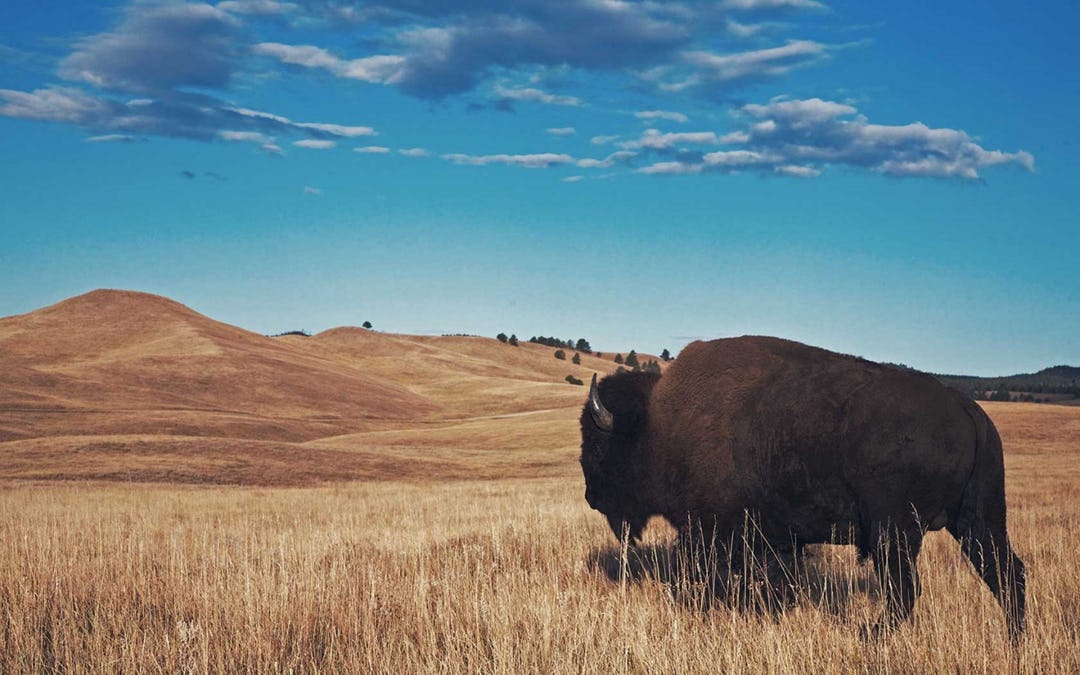Bison Vs. Beef
We enjoy, eat & sell both, but this is still good info to have.

After decades of being maligned for its saturated fat, beef has made a comeback with nutritionists, with recent research showing that fat doesn’t increase the risk of heart disease as previously thought.
But beef has another opponent to contend with, and it’s been here for centuries: bison.
Similar to beef both nutritionally and in terms of flavor, buffalo meat is an alternative to the cow (incidentally, “bison” is technically the correct term for the animal, but it’s come to be used interchangeably with “buffalo”).
Both bison and beef can be part of a healthy diet. But if you had to pick one big animal to take a bite out of, which one should you choose?
We compared beef and buffalo in every important category to determine the alpha protein on the range.
Is Bison Better than Beef?
| BISON |
BEEF |
|
|
(4 oz serving)* |
130 calories |
140 calories |
| Safety
|
Never administered antibiotics or hormones |
Often administered antibiotics and hormones (unless USDA Organic) |
| Environmental Impact |
Low carbon emissions, helps preserve grasslands |
High carbon emissions, depletes grasslands |
| Treatment of animals |
Allowed to graze freely most of the time |
Usually raised in feedlots (unless marked “free-range” on label) |
| Taste |
Drier and sweeter than beef |
Drier and leaner than conventional beef if grass-fed |
| Cost |
More expensive |
Less expensive |
*There are many cuts of both bison and beef available. To equate them as closely as possible, we chose top sirloin—a very lean cut preferred by athletes—for the nutrition facts part of the table. Also, as bison is mainly raised on pasture, we went with grass-fed beef in the example to match it. In other words, the table compares buffalo to the very best the beef world has to offer. More commonly found conventional beef would have approximately 230 calories, 23g protein, and 15g fat per four-ounce serving.
WINNER: Bison
Buffalo Meat is Better Quality
Across all cuts, buffalo meat is lower in calories and fat than beef is, and higher in protein. A three to four-ounce serving of bison ribeye has 177 calories, 6 grams fat, and 30 grams protein compared to a typical beef ribeye, which contains 265 calories, 17 grams fat, and 27 grams protein. According to the USDA, bison burgers have 152 calories and 7 grams fat, which is less than even a 90% lean beef burger (184 calories and 10 grams fat) and a 93% lean turkey burger (176 calories and 10 grams fat). Bison offers more omega-3 fats than beef, and a better omega-6 to omega-3 ratio.
Bison doesn’t give up any micronutrition to beef either. It’s higher in B vitamins than beef—critical nutrients for boosting energy levels, memory, and mood —as well as copper, potassium, and zinc. Reader’s Digest even recommended it as one of the best sources of iron for pregnant women, who tend to be anemic more than men due to menstruation.
Research supports bison as being heart-healthier too. A study published in Nutrition Research in 2013 compared the effects of consuming bison versus beef. Ten healthy men ate 12 ounces of either beef or bison per day, six days per week, for seven weeks. Then, after a 30-day “washout” to clear their systems, the bison-eaters switched to beef and vice versa for another seven weeks. Researchers concluded that “in terms of vascular health, bison meat appears to provide a healthier alternative to red meat.” In fact, after a single beef meal, harmful oxidized LDL cholesterol levels were elevated. The same changes did not occur after eating buffalo.
If you’re concerned about how your meat was raised (and you should be), bison is the safer choice every time. “All bison spend the majority of their life grazing on pasture,” says Dave Carter, Executive Director of the National Bison Association, a non-profit organization of bison producers.
I thought someone may enjoy this article... so here is a link to the whole thing https://www.onnit.com/academy/bison-vs-beef/